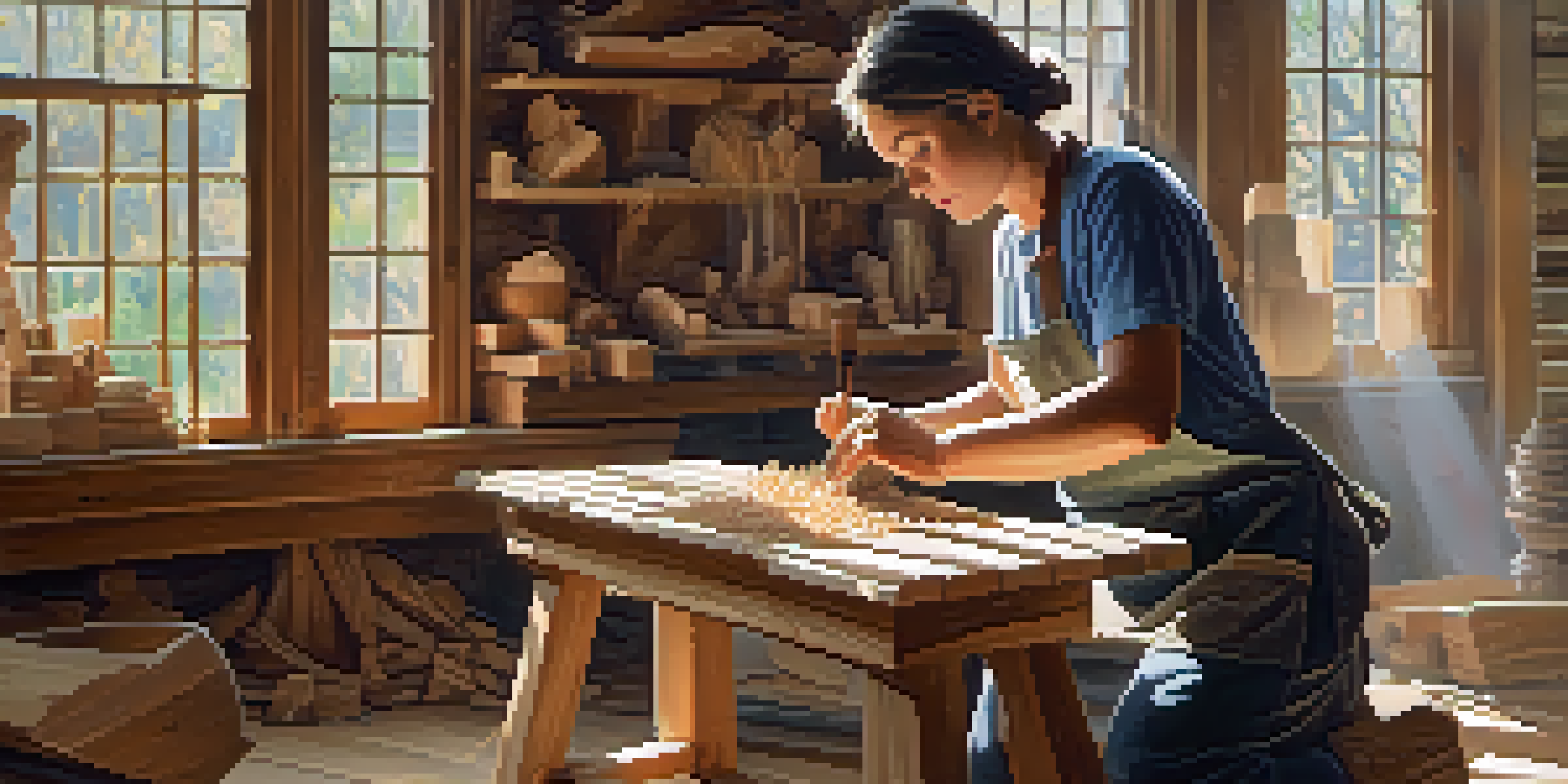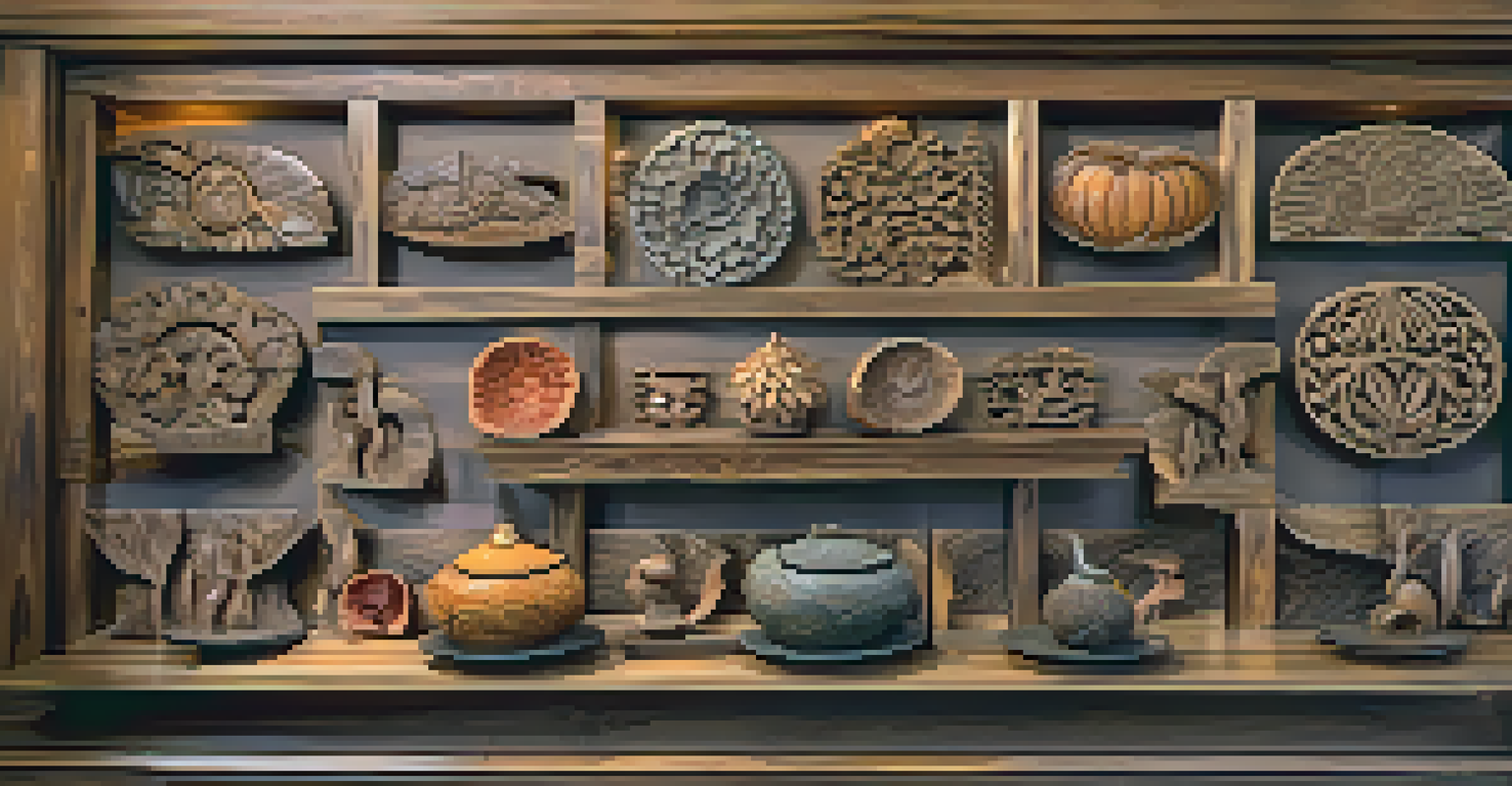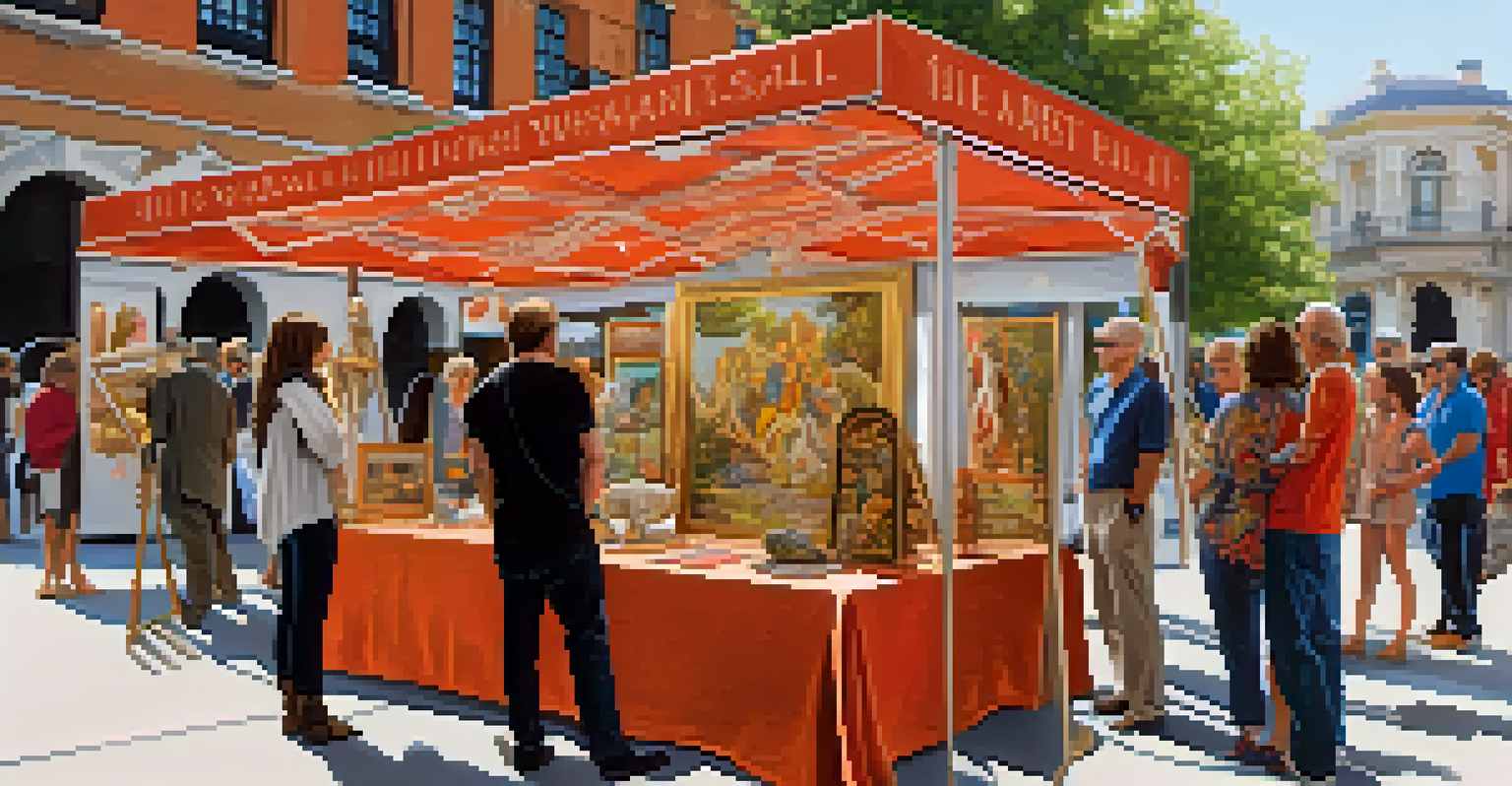Pricing Your Carvings: Strategies for Profitability

Understanding Your Costs: The First Step to Pricing
Before you can set a price for your carvings, it’s essential to understand all associated costs. From materials like wood or stone to tools and workspace, every penny counts. Additionally, consider indirect costs such as your time and overhead expenses, which can significantly impact your profit margins.
Price is what you pay. Value is what you get.
For instance, if you spend $50 on materials but fail to account for the 10 hours you invested in crafting, you might undervalue your work. By accurately calculating these costs, you create a solid foundation for determining a fair price that reflects both your effort and investment.
Remember, knowing your costs doesn’t just help in pricing; it also aids in budgeting for future projects. This understanding can guide you in selecting materials and techniques that enhance your artistic expression while keeping profitability in mind.
Researching the Market: Pricing Comparisons
Once you know your costs, the next step is to research the market. Look at what similar carvings are selling for, both locally and online. This can give you a benchmark but don’t forget to evaluate the quality and uniqueness of your work in comparison to others.

For example, if most similar pieces are priced between $100 and $300, consider where your work fits within that range. If your carvings feature intricate designs or unique materials, you may be able to command a higher price. Conversely, if your pieces are more basic, you might need to adjust downward.
Understand Your Costs First
Accurately calculating all associated costs is crucial for setting a fair price that reflects your effort and investment.
Market research isn’t just about finding a price; it's also about understanding your audience. Knowing who buys your work and what they value can help tailor your pricing strategy and improve your sales potential.
Identifying Your Target Audience for Effective Pricing
Your target audience plays a crucial role in how you price your carvings. Are you catering to art collectors looking for unique pieces, or are you targeting a broader market of casual buyers? Understanding your audience’s willingness to pay can significantly influence your pricing strategy.
The price of anything is the amount of life you exchange for it.
For instance, if your carvings appeal to high-end collectors, you might price them higher due to perceived value. Alternatively, if you aim for a wider audience, a more accessible price point could lead to higher volume sales. It’s all about finding that balance.
Engaging with your audience through social media or local art fairs can provide valuable insights into what they appreciate in your work. This interaction not only helps refine your pricing but also builds a loyal customer base.
Value-Added Strategies: Enhancing Perceived Worth
To justify your pricing, consider implementing value-added strategies that enhance the perceived worth of your carvings. This could include offering custom designs, personalized touches, or even storytelling behind each piece. Such elements can make your work feel more exclusive and desirable.
For example, if you provide a certificate of authenticity or share the inspiration behind a carving, customers may be more willing to pay a premium. People love to feel connected to the art they purchase, and these personal touches can create a deeper emotional investment.
Research Market Pricing
Analyzing prices of similar carvings helps you establish a competitive pricing strategy while considering the uniqueness of your work.
Additionally, showcasing your craftsmanship through high-quality images or videos can elevate your work’s perceived value. The more effectively you communicate the quality and story of your carvings, the more justified your pricing will be.
Pricing Strategies: Fixed vs. Dynamic Pricing
When it comes to pricing your carvings, you can choose between fixed and dynamic pricing strategies. Fixed pricing sets a specific price that doesn’t change, providing clarity and simplicity. This approach works well if you have a consistent product line and a well-defined audience.
On the other hand, dynamic pricing allows you to adjust your prices based on demand, seasonality, or even special events. If a particular carving style gains popularity, you might increase its price to maximize profits. This flexibility can be beneficial in a competitive market.
Ultimately, the choice of strategy should align with your business goals and market conditions. Testing different approaches can help you find what works best for your specific situation and customer base.
Communicating Your Prices: Transparency Matters
Once you’ve set your prices, it’s important to communicate them effectively to your audience. Transparency in pricing builds trust and helps customers feel more comfortable making a purchase. Clearly displaying your prices on your website, at shows, or in galleries can prevent confusion.
Consider explaining the rationale behind your pricing as well. When customers understand the craftsmanship, time, and materials involved, they’re more likely to appreciate the value of your carvings. For example, if a piece is priced higher due to its intricate details, sharing that story can resonate with potential buyers.
Communicate Prices Transparently
Effectively conveying your pricing rationale builds trust and helps customers appreciate the value of your carvings.
Incorporating testimonials or reviews from previous customers can also reinforce the value of your work. When others vouch for your craftsmanship and pricing, it can help sway undecided buyers.
Review and Adjust: The Importance of Flexibility
Finally, pricing is not a one-and-done task; it requires regular review and adjustment. As trends change and your skills develop, your pricing should evolve accordingly. Periodically assessing your sales data and customer feedback can provide insights into whether your prices are still aligned with market expectations.
For instance, if you notice that certain pieces are consistently selling out, it may be time to raise their prices. Conversely, if some items linger unsold, it could signal the need for a price reevaluation. Flexibility is key in a fluctuating market.

Additionally, don’t hesitate to experiment with promotional pricing during slow periods or special occasions. These tactics can help boost visibility and sales, ultimately leading to better long-term profitability.